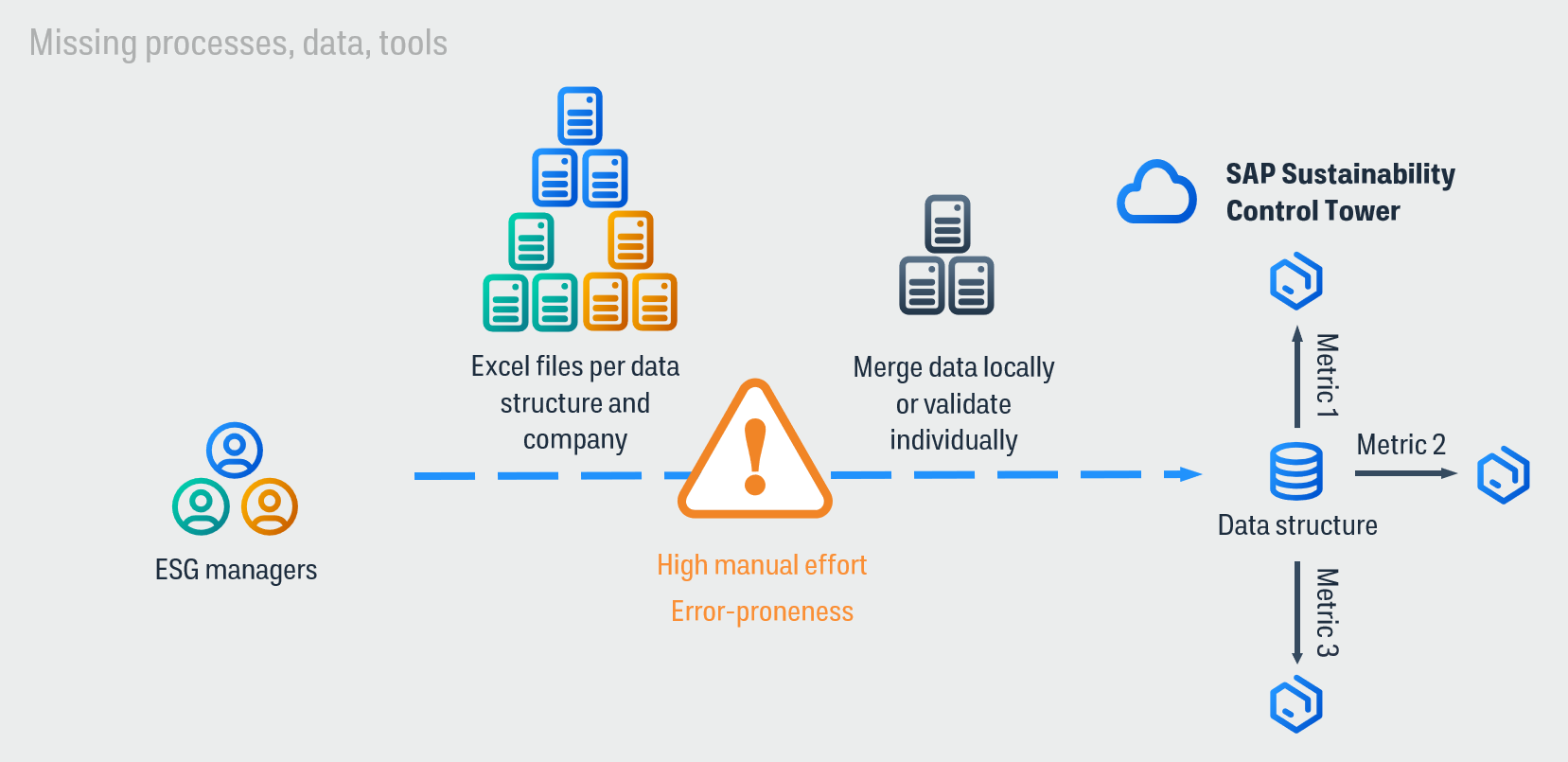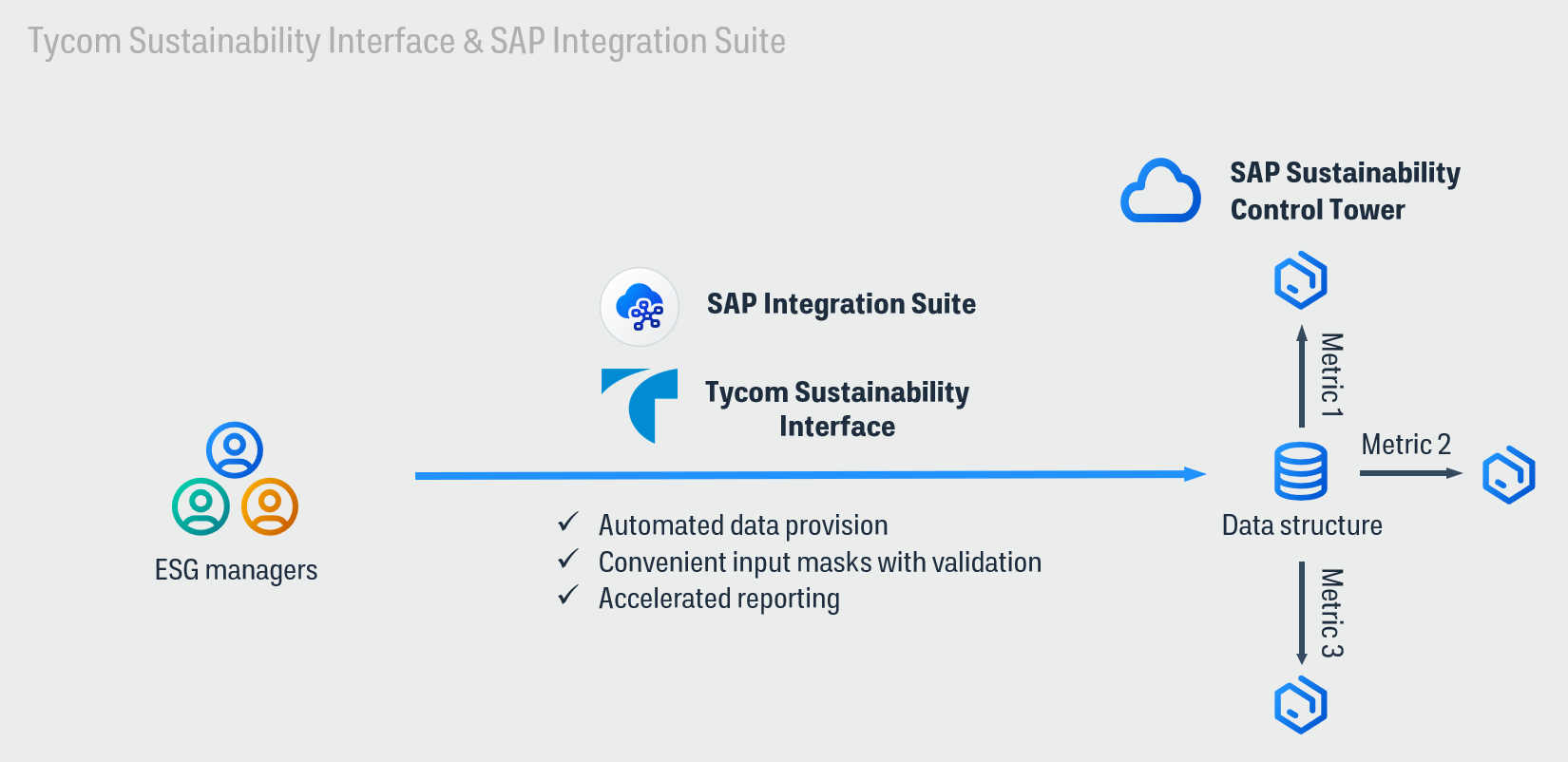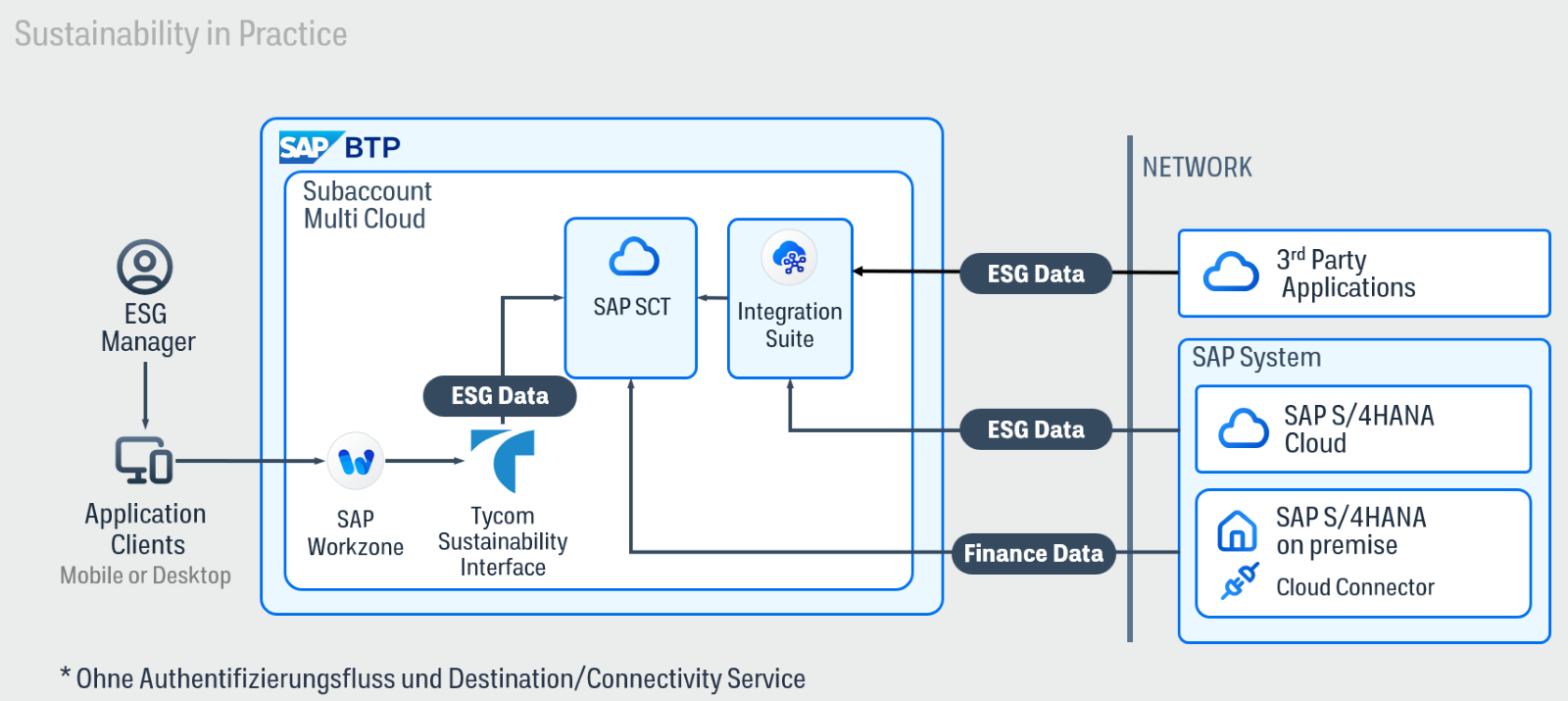
Sustainability in Practice
In today's fast-paced business world, sustainability is a critical factor for long-term business success. Many organisations are under increasing pressure to reduce their environmental impact, improve resource efficiency and adopt more responsible business practices. The SAP Sustainability Control Tower (SCT), SAP's innovative reporting solution in the area of sustainability, provides the ideal basis for gaining an overview of the current company situation according to a uniform standard. In addition to the standard for voluntary ESG reporting that has been established for years, many companies will be subject to mandatory ESG reporting in accordance with CSRD and other mandatory requirements in accordance with the EU Environmental Action Plan on supply chains, deforestation, etc. from 2025. In addition, many companies are confronted with market requirements from their business partners, such as customer enquiries about the carbon footprint of their products. The provision and reporting of data for ESG reporting with globally distributed companies and different ERP systems often poses an additional challenge. An innovative end-to-end solution based on the SAP Cloud portfolio was developed and rolled out globally for this purpose.
Requirements for ESG reporting

Your contact person
Would you like to know how this solution can be integrated into your company?
I would like to find out more
Customer success story at the Tyrolit Group
The Tyrolit Group is one of the world's leading manufacturers of grinding and dressing tools and a system provider for the construction industry. For over 100 years, innovative tools and solutions from the Tyrolit Group have played a decisive role in technological progress in various industries.
- 80000+ products, 4500 employees, 30 global production sites, sales in 140+ countries
- Machine connection in production (Industry 4.0)
- SAP customer since 1985 with SAP ECC until Q2/2023: Migration S/4HANA
- SAP solutions in use: S/4HANA, SAC, SCT, BTP, Cloud Connector
The challenges
In business practice, the technical problem arises that a wide variety of data has to be collected, consolidated, aggregated and analysed worldwide in order to report on these requirements in a standardised format. Until now, companies have generally made do by providing data via a variety of Excel files, but in practice this leads to a great deal of manual effort and a high susceptibility to errors, which slows down reporting.
In recent years, the Tyrolit Group has also worked very intensively on providing data as part of voluntary ESG reporting. Predefined data fields are requested from over 30 production sites worldwide by the central environmental management department at the headquarters in Schwaz. Responsibility for the data lies with the local ESG managers distributed around the world, who must provide the required information in the specified format and in acceptable data quality on time. Due to the constantly growing company structure, different systems are used at different locations, which makes a standardised data procurement process difficult.
Due to the known challenges of using Excel templates that have to be merged manually, one of the requirements for the new reporting solution was to avoid the use of Excel with the upcoming even more restrictive legal requirements. Due to the need to integrate the ESG data as a chapter in the management report, this data is also reviewed and approved by auditors. This requirement also underpins the decision to rely on a clear, transparent and validation-proof solution instead of Excel, which also provides the best possible support for those responsible for ESG in the provision of data.

Figure 2 Technical challenge in ESG reporting
Why do we rely on the SAP Sustainability Control Tower (SCT)?

Figure 3 Overview in the SCT Cockpit

Figure 4 Metrics in the SCT
Main features of the SAP SCT
Centralised data management: SAP SCT consolidates sustainability data from across the entire company, providing a holistic overview of the company's impact. This helps companies to avoid data silos and ensures accurate reporting to internal and external stakeholders.
Monitor key figures: With analysis functions, SCT enables companies to track their sustainability performance across locations and time periods. This allows potential for improvement to be identified, the use of resources to be optimised and waste to be reduced, which ultimately leads to greater efficiency and lower costs.
Regulatory compliance: SCT simplifies compliance with ever-changing environmental legislation by automating reporting processes and providing up-to-date insights into business performance in compliance with standardised regulatory metrics.
Involvement of stakeholders: Due to the underlying data structures for determining the ESRS key figures, a detailed database can be used. This leads to greater transparency in the achievement of sustainability goals, which is crucial for the involvement of investors, customers and employees. By communicating successes in the sustainability strategy, companies can build trust and demonstrate their commitment to responsible business practices.
Data provision for ESG reporting with SAP solutions and the Tycom Sustainability Interface
When providing data, it is important that the globally distributed ESG managers can provide the data required for sustainability reporting quickly, efficiently and in a validation-proof format. Although a solution based on Excel lists can be distributed quickly, it is generally not effective in practice due to the high susceptibility to errors and the manual effort involved and slows down reporting.
Automated data provision makes sense wherever data is available in good quality in the source systems. With the Integration Suite, ESG data can be extracted from both SAP systems (cloud/on-premise) and third-party systems in the required data structure. Data from S/4HANA on-premise systems can also be uploaded directly to the SAP SCT.
If an ESG database cannot be set up completely, TYCOM's Sustainability Interface is used, which can be used via APIs for all key figures, including specially modelled ones. This application was developed to support end users with convenient input masks and value help for the individual characteristics and to validate the data provided at the same time. This approach also ensures better auditability of the data provided, which simplifies and speeds up collaboration with auditors.

TYCOM's Sustainability in Practice solution offers a reliable and future-proof system architecture for providing the data required for ESG reporting in SAP SCT in a validation-proof and efficient manner. This architecture has a modular structure so that all individual solutions can be used independently of other applications. A side-by-side extension on the BTP enables a generic approach to be offered so that all sustainability KPIs can be uploaded across companies and independent of SAP systems.
The manual upload is supplemented by fully automated data flows using the SAP Integration Suite with an existing ESG database. As an example of the automated connection of third-party solutions, transport emissions and energy consumption from both external cloud applications and on-premise solutions are prepared and made available directly for the SCT on a monthly basis without any additional manual effort.

The reporting system can optionally be expanded to include functionalities from the SAP Analytics Cloud SAC in order to obtain a holistic view of sustainability issues within the company. The SAC also supports the planning of sustainability targets with the planning functionalities of the SAC.
When fully expanded, the architecture will therefore be supplemented by the SAP Analytics Cloud in order to gain insights into the current company situation in real time. By expanding time recording, for example, commuter emissions can be recorded at individual document level, extrapolated and analysed in real time depending on the means of transport and various employee characteristics and used to develop improvement measures. In addition, a SAC dashboard was developed in order to keep an eye on the social key figures throughout the year and to be able to react as quickly as possible in the event of anomalies or deviations from the defined company targets.

How SAP SCT supports the sustainability goals
Reducing the carbon footprint: SCT helps companies measure and reduce their CO2 emissions by tracking energy consumption, transport emissions and production-related impacts. With this knowledge, companies can take targeted initiatives to reduce their CO2 emissions.
Resource efficiency: By analysing resource consumption, companies can use SAP SCT to minimise waste and optimise the use of materials, water and energy. This not only reduces the environmental impact, but also lowers operating costs.
Sustainable supply chain management: The reuse of social indicators as part of the Supply Chain Sustainability Act also makes it easier to fulfil requirements along the value chain. In addition to monetary values, emissions data will also become established on the market and gain in value in order to reduce one's own footprint. This promotes responsible procurement and reduces the environmental risks associated with production on the one hand and strengthens compliance with human rights in supply chains on the other.
Conclusion
The SAP Sustainability Control Tower is a powerful tool for organisations looking to integrate sustainability into their business strategy. With the ability to centrally consolidate data, gain real-time insights and make smarter decisions, SAP SCT enables organisations to make significant progress towards their sustainability goals while remaining competitive in a rapidly changing marketplace. By using SCT, organisations can reduce their environmental impact, increase operational efficiency and contribute to a more sustainable future.
SAP SCT offers extensive functionalities, but can only be used to a limited extent as a stand-alone solution in corporate practice. This is where TYCOM's integrated overall solution Sustainability in Practice comes in, which builds on SAP SCT and extends it with key components of the SAP Cloud Portfolio: - TYCOM's Sustainability Interface supports the validation-proof provision of data by ESG managers distributed around the world via convenient input masks: for fast and efficient ESG reporting without Excel.
- Third-party systems can be connected to the SCT via the SAP Integration Suite in order to automatically provide their data for centralised reporting.
- The optional use of SAP SAC simplifies the monitoring of sustainability KPIs and supports the planning of sustainability targets.
With this innovative, cloud-based overall solution, the Tyrolit Group is very well positioned to cover current and future sustainability reporting requirements in an efficient and validation-proof manner and to monitor and control the achievement of sustainability targets.
Customer feedback
DI Antje Schwemmberger MBA CSE
Head of Environmental Management
Tyrolit - Schleifmittelwerke Swarovski AG & Co. KG

"For the 38 companies in the Tyrolit Group, we need an efficient and transparent way to create auditable sustainability indicators for the management report.
Tycom's holistic solution in conjunction with SAP SCT is the ideal basis for us."
Sustainability in Practice from Tycom

The practical solution for SMEs

